
by Joseph Kuefler (Balzer + Bray, 2015)
Settle in for snippets of story so goosebumpy you’ll think the pages just paper-sliced your soul in two. It is an honor to introduce you to Joseph Kuefler and his gorgeous debut, Beyond the Pond. I love every single word he’s spilled out to us here.
Enjoy!
Can you talk about where this book came from?
My dearest childhood friend lived across the street from a picturesque pond — one of those charming bodies of water with just the right mix of long grass, cattails and critters. Early mornings almost always found its surface blanketed in a magical fog. In winter months, we would skate on its surface. That pond filled me with such wonder as a boy.
So many years later, the wonder of ponds came back to me when I found myself telling my son, Jonah, stories each morning as I drove him to school. Our route took us past a smaller but no-less-magical pond, sandwiched between a row of houses, almost as if it was forced there, like it didn’t belong. We both imagined what fantastical creatures lived beneath its surface. And so, an idea for a picture book was born.
In hindsight, I absolutely see the connection between these moments of inspiration in my life.
And what was your process like for creating it? How did you turn an idea for a story into a completed picture book?
One advantage of being an author/illustrator is that my words and images can reveal themselves together. I begin with a loose story skeleton and single completed illustration that captures the atmosphere of the book. Small thumbnails get created as I’m improving and iterating on the story. Sometimes a posture or scene in my thumbnails will inspire a change to the text, sometimes it’s the other way around. Once the story is tight, I return to my thumbnails and create much tighter pencils, focusing more on composition and type placement.


 When it comes to final art, I work digitally, more out of necessity than choice. At the moment, picture books aren’t my day job, so I need to work from anywhere and everywhere. I was traveling a lot for work in the early stages of illustrating POND. Much of the book was illustrated from airplane seats and hotel rooms, cramped rides on bus benches and stolen moments in the office.
When it comes to final art, I work digitally, more out of necessity than choice. At the moment, picture books aren’t my day job, so I need to work from anywhere and everywhere. I was traveling a lot for work in the early stages of illustrating POND. Much of the book was illustrated from airplane seats and hotel rooms, cramped rides on bus benches and stolen moments in the office.
As someone formally trained at art school, I long for the day I can rely solely on traditional materials. In some ways I still feel like I need to apologize for using a computer, which is silly, I suppose, because digital doesn’t save me time and is no less difficult. The only thing it affords me is more mobility and greater access to my creative process.
I read on your website all about Hum, and I’m so interested in that. Not so much as a musician myself, but because I think picture books function the same way a song does, as a complete and full narrative that can transcend that small space. What do you think?
I love this question because I absolutely agree. Prior to moving into my career as a creative director, I spent years working as a serious musician playing in an indie rock band. Songwriting and record producing is core to who I am and informs so much of all of my creative processes, both personal and professional.
Writing a great song begins with two questions: What do I want them to know? And how do I want them to feel? Nostalgia? Fear? Melancholy? Vulnerability? Defining the emotional arch predetermines so much about your palette—key, tuning, scale, effects, chord progressions, even mixing decisions. Once that’s defined, you need to reduce all of it, your whole vision, into between three and five minutes of music. It’s such a challenge.
This is true of great books. The books we love tell us a story, but they also tell us feeling. They teach us, adults and children alike, what it feels like to experience something, and they do it in 32 pages, give or take. A songwriter has chords. A picture book maker has paints and pencils. A songwriter has a small collection of seconds or minutes. A picture book maker has pages. Both artists curate their palettes to breathe the right mix of mood into whatever it is they are making.
More than any other mediums I’ve explored, children’s books and songs are the most related.
Like you suggest, great songs and picture books transcend their small spaces. They live on in your mind and heart and come to mean or represent so much more long after the final chord has rung and last page has turned.
Reviews have called this debut reminiscient of Maurice Sendak, Jon Klassen, and Wes Anderson, all huge story heroes. Who are your own story heroes?
I know this is a picture book blog, but my greatest passion is cinema. I love movies and have my whole life. My dad encouraged me to explore the classics, with a particular emphasis on the defining films of the 60s and 70s. Many of my story heroes are filmmakers. I am a huge fan of Jean-Pierre Melville because he found a way to steal the best parts of Hitchcock and blend it with that kind cool only the French possess.
As a child, I loved Spielberg and the wonderful films Amblin would produce because they seemed to understand children in a way few other films did. I do love Wes Anderson for his vision and wit but also for the expert way he handles melancholy. When I begin a new picture book, I typically dive into the films that I feel share a similar atmosphere or message. It’s intentionally obvious I’ve included a few homages to Anderson’s films and style in POND—I wanted to thank him for inspiring me, and I wanted to give moms and dads something of their own to discover within the book.
Animation is also a huge source of inspiration for me. Words can’t describe how much Miyazaki inspires me. His films are somehow massive in scope and incredibly intimate and personal.
I can’t say that I have any specific story heroes in the picture book space. I love the Steads and Klassen and Jeffers and all of the other usual suspects, but I don’t look to picture books to inform my own work as much as I do film or literature, even photography. I’m not trying to suggest that other picture books don’t influence my work—they most certainly do. They’re just not my primary source and I typically look to them much later in the process to help me work through a very specific problem.
I would, however, be remiss if I didn’t mention JK Rowling. Sometimes I close my eyes and hope that when I open them I will have somehow grown a scar on my forehead and transformed into Harry Potter. Rowling succeeded in revealing a hidden magic in our own world, something tucked away just around the bend, something you hadn’t realized was there all along. I love that so much about those books. Turning a pond into a portal seemed to transform the everyday and reveal a hidden magic in a similar way.
Can you tell us a little about the trailer for Beyond the Pond and how you created it? It’s such a perfect piece, and I always think trailers that feel like short films are some of the best!
Thank you for the compliments. I am a creative director who has spent many years in the branding and marketing industries working for clients we all know and love. Making films and telling their stories is a skill I’ve developed over time. When I began considering my own trailer, I knew it needed to feel a little more like a movie trailer than a “book” trailer. It was the only way I felt I could capture the spirit and scope of the book in such a short period of time.
Some are surprised to learn that the voice actor is me. The trailer simply HAD to be narrated by an old, English gentleman because, well, old, English gentlemen are the most magical of men. I didn’t have any on hand, so I put on my Dumbledore hat and effected one.
I love animating. It’s something I don’t get to do as often now, but I was thrilled to be able to dig back into After Effects for this little piece and am pretty happy with how it turned out, all things considered.
What do you remember about picture books from your childhood?
I remember my school library and, Ms. Geese, the world’s crabbiest librarian (if you’re reading this, Ms. Geese, I’m sorry, but you really were frightening). She demanded that we extract library books from the shelves with such expert precision you’d think they were Fabergé eggs. But since we were all so afraid of her, we would hide away in corners with our books. In some ways, her terror forced us to have a more intimate relationship with our books, and for that I am grateful.
I remember the pictures and wishing I could draw like those artists. Like all boys, I was so in love with WHERE THE WILD THINGS ARE. I would try to replicate the wild things over and over and wondered how in the world anyone could ever draw like that. All these years later, I am still left wondering.
What is your favorite piece of art hanging in your home or studio?

I have two favorite walls in my home. One is a quiet corner of my house filled with family photos and texture studies I made over this last year. The family photos feature some of our favorite memories and experiences. It’s something we will continue to grow and add on to over the years.
The second is a Banksy print hanging in my dining room. It’s big and bold and probably doesn’t belong in a space where people are meant to enjoy meals, but I like that about it.
What’s next for you?
A nap. Honestly. Between my day job, working to support POND’s release, welcoming our third child, Augustine, into the world four months ago, and breathing life into a new picture book, this year has been full, so incredibly, exhaustingly full. But it’s been a good kind of full.
Alessandra Balzer and Balzer + Bray were kind enough to buy two more books from me immediately after we finished POND. By the time this feature runs on your blog, I will have just completed final art for my next book. Then, it will be onto the third. I’m also developing a middle grade book and young reader series.
Beyond that, what’s next is experiencing what it feels like to release my very own picture book into the world. This whole thing continues to be so surreal. One of my lifelong dreams is in a state of becoming, and I couldn’t be happier.
—
That story about Ms. Geese is one of the greatest library stories I’ve ever heard! Joseph, thanks for the music and the glimpse at the pond and beyond it all.
A big thank you to Joseph Kuefler for the images in this post.
Add a Comment












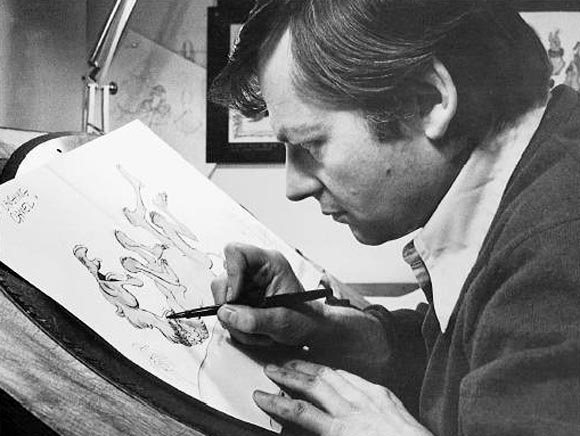
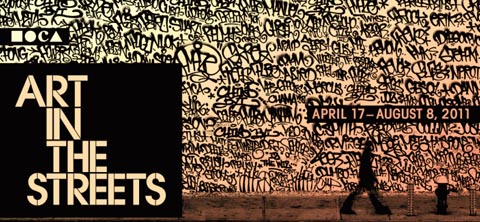
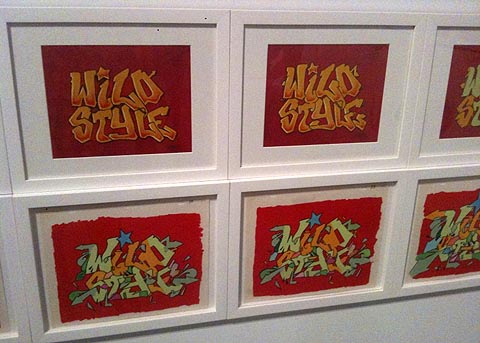
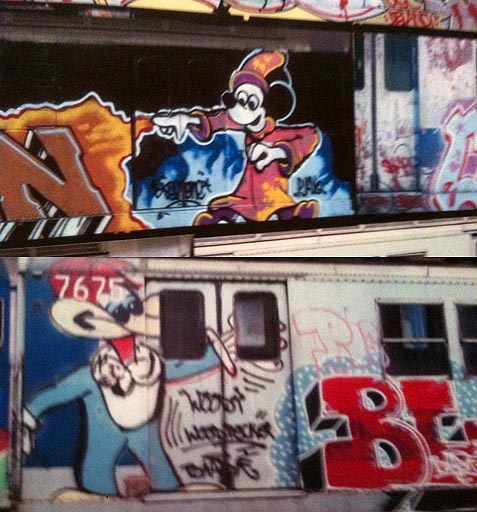
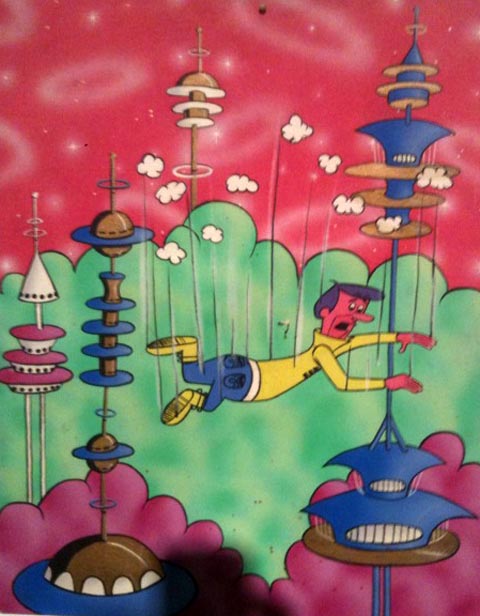
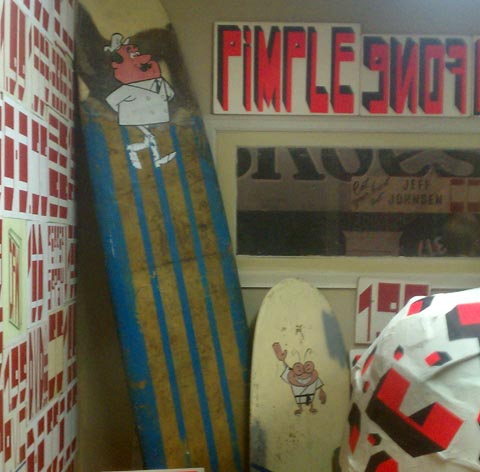
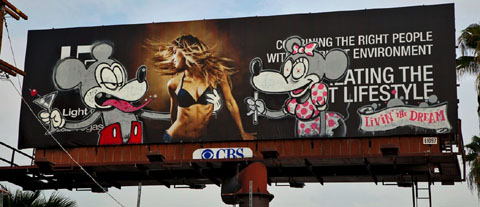
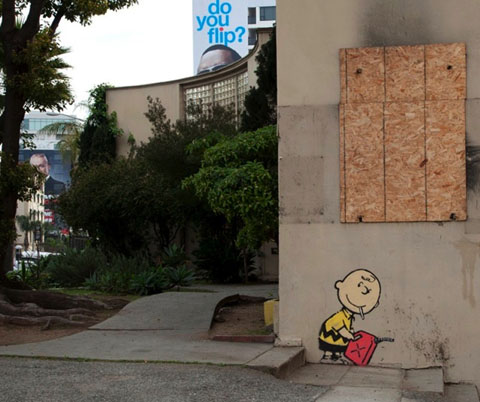
I remember that Douglas Adams once suggested that P G Wodehouse was, in his way, a genius on a par with J S Bach. That his command of humour was as much an act of virtuosity as the composer's command of a musical score. I can definitely see what he meant.
Humour has to be one of the highest art forms simply because it's so dashed hard to do.
Absolutely - and harder still to do consistently. Rob Brydon said recently about panel games: "We all have mates who can be really funny, but the question is: can you be funny next Tuesday at 7.30?"
We were there too, John, a few weeks ago. It was enormous fun. I particularly liked the cages full of slowly crawling frankfurters and cheeping chicken nuggets.
There was a guy quoted in the Guardian this week - an art critic - fulminating that Banksy should have been 'drowned at birth'. 'It doesn't matter if they like it,' he growled about the people of Bristol et al, thus qualifying for the Stuffy Old Bugger of the Year Award; 'it's not art.'
That's Brian Sewell, who I believe is ineligible for the Stuffy Old Bugger of the Year award by virtue of having won it too many times already, rather like JK Rowling and the Smarties prize.
My Apple dictionary defines art as "the expression or application of human creative skill and imagination, typically in a visual form such as painting or sculpture, producing works to be appreciated primarily for their beauty or emotional power". I think for Brian Sewell (whose initials are rather fortuitous, don't you think?) beauty may be the defining factor, whereas for me you could leave that word out; it's about emotional power (including that found in beauty, of course) - and anything that can make you laugh out loud has some sort of emotional power.
I found the frankfurters fun but just a little creepy, by the way. Partly because I was there with my kids, my favourite bit was finding all the items he'd sneaked in to the other displays, especially the art galleries upstairs.
And how amazing to see hundreds of people queuing for hours to visit a modern art exhibition!
It's great fun to read the Johnson quote in context, where he talks about inventing pleasures for the rich and idle, also about news writers (Idler No. 30). I'm a great fan of Johnson's tongue. How appropriate to quote him in a post about humour! (Surely he'd be a blogger today.)